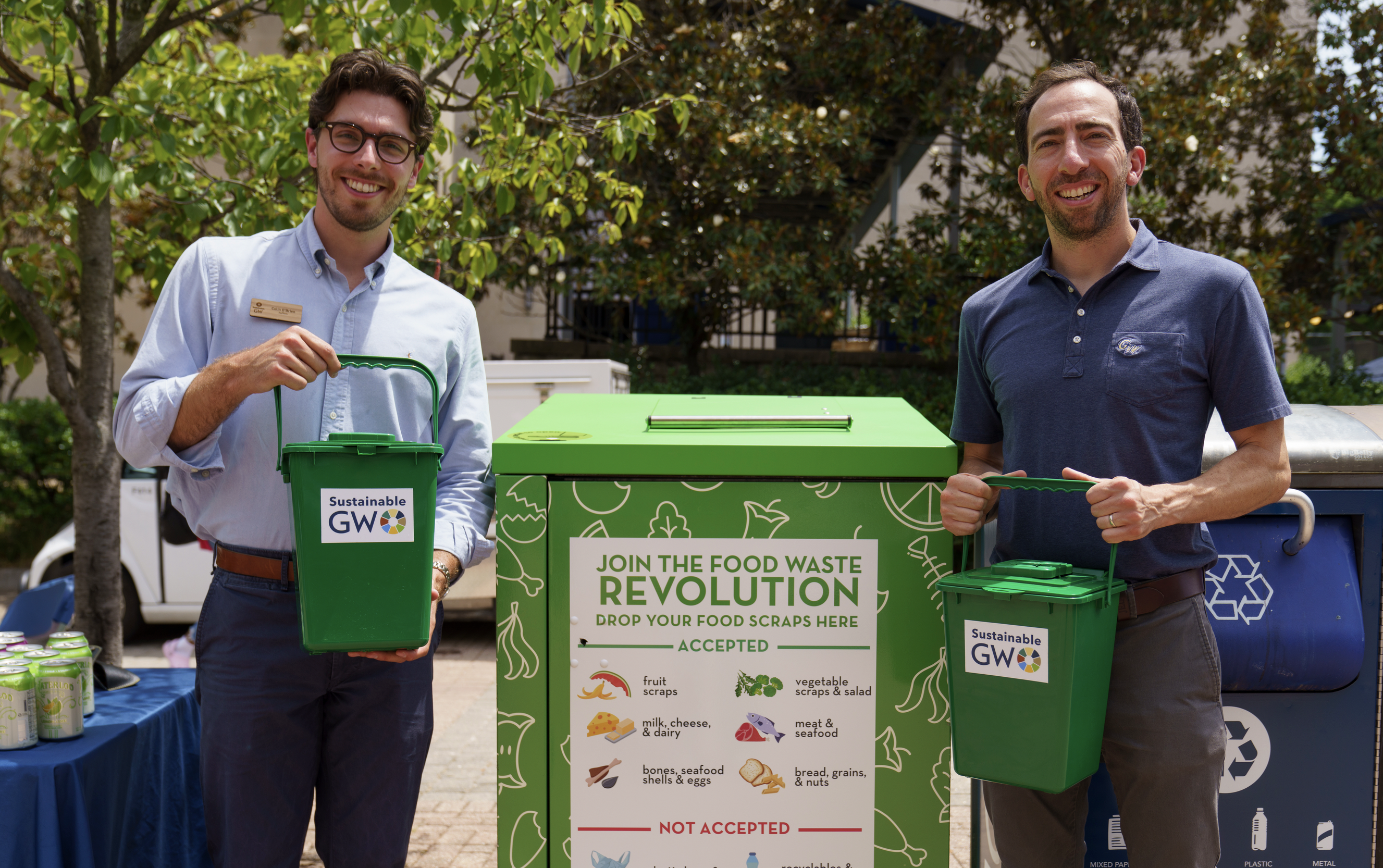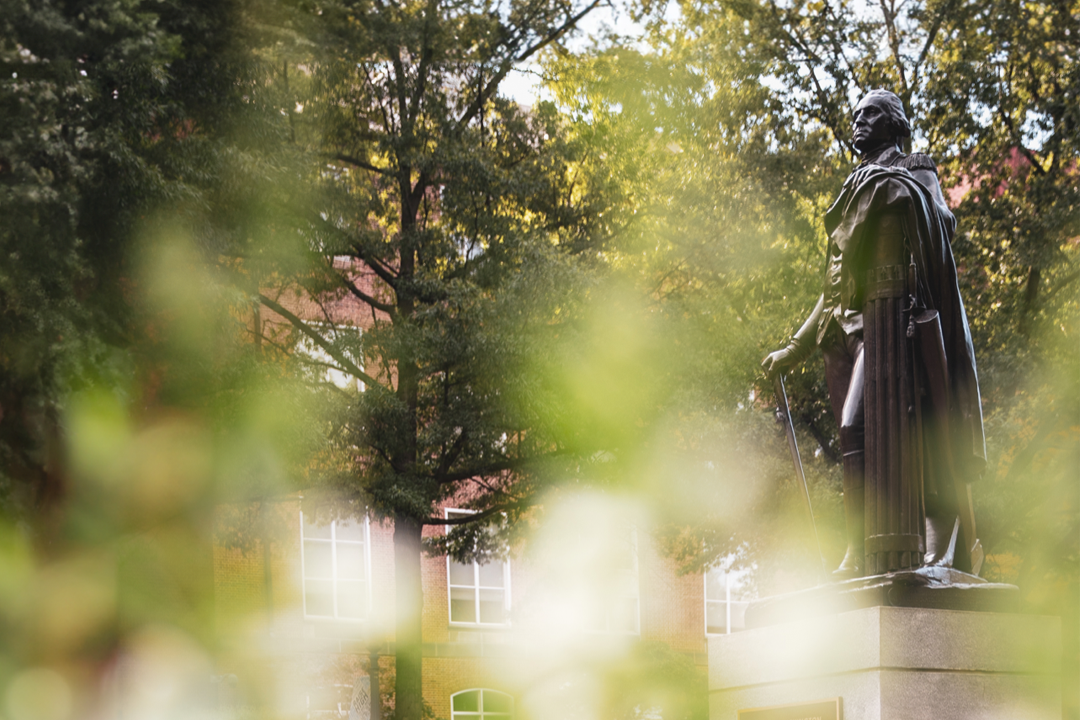The George Washington University’s Office of Sustainability is partnering with the Washington, D.C., Department of Public Works (DPW) to be the first location in the District to receive a new smart food waste collection bin, positioned near the clock tower in Kogan Plaza. The bin, a sealed container (“enclosure”) with a 65-gallon wheeled barrel (called a “toter”) inside, pops open with a command from a smart phone.
The app needed to open the container is available at no cost and is easy to use. The partnership with DPW reflects GW’s position as a leader in sustainable innovation, according to Sustainability Associate Colin O’Brien, B.A. ’20.
“If the project’s a success, we will likely see these smart bins all across the city,” O’Brien said. “In New York City right now they have around 200 similar bins in neighborhoods across the city.”
Prior to the installation of the new smart bin, manufactured by metroStor, organic waste could be dropped off five days a week, three hours each day, to Kogan Plaza, where a team of student compost educators recorded data showing that about 300 community members on and around campus are collecting food waste at home or in their office before dropping it off.
The installation of the smart bin means that food waste can now be dropped off 24 hours a day, seven days a week. Each 65-gallon toter can hold between 200 to 400 pounds of food waste in total.
The smart technology requiring a conscious step to unlock the bin is intended to keep pests out and also to stop people from putting ordinary trash such as soda cans and snack wrappers into the receptacle. It takes about 30 seconds to scan the QR code that will be on the side of the enclosure, which enables users to push a button on the app to open it, but that should be sufficient time to keep inorganic items from being deposited. Graphics printed on the side of the enclosure show what kinds of materials should and should not be deposited in the bin.
Student staff will replace the toters at least once a day and wheel the full ones to the loading dock at Gelman Library, where the contents of the bin will be picked up and then delivered to one of the industrial-scale composting facilities maintained by Maryland Environmental Services (MES).
“These are massive versions of what you would have as a backyard compost pile,” O’Brien said. “Composting on a very large scale generates the kind of heat and microbe levels that can break down more dense organic materials like meat, bones, dairy and even compostable products—plant-based bioplastics and other compostable containers.”
GW Dining has started to introduce such products, O’Brien added, as part of its forward-thinking approach to sustainability, and students will be able to compost their bowls, cups, pizza boxes and any utensils labeled “compostable” in the new smart bin.
The composting of food waste is one of the most effective ways that individuals can reduce their carbon footprint. The Washington Post has reported that the carbon footprint of food waste is greater than that of the airline industry.
“If food waste was its own country,” O’Brien said, “it would be the third largest emitter of greenhouse gases in the world.” In landfills, he added, food waste breaks down anaerobically, resulting in the emission of methane and other gases. “But in composting, food waste breaks down as it does in nature, aerobically, which produces almost no greenhouse gases and is much better for the environment.”
Food composting is a circular system rather than a linear one, O’Brien said, boosting its sustainability value. Composted food waste can be turned into a useful soil amendment, providing nutrients to future generations of crops.
More information about the various sustainability efforts on campus is available on the Office of Sustainability website. These include programs such as Green Move-Out, in which items left in residence halls are donated for recycling, and the Reuse Market, where students can choose bedroom and bathroom furnishings and other residence hall essentials collected during Green Move-Out.






